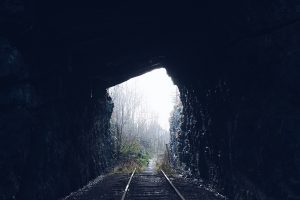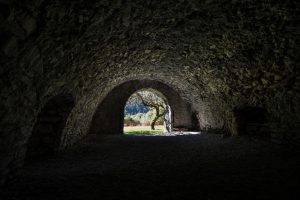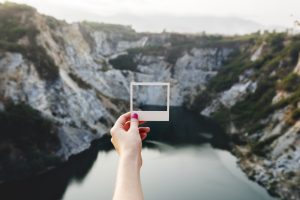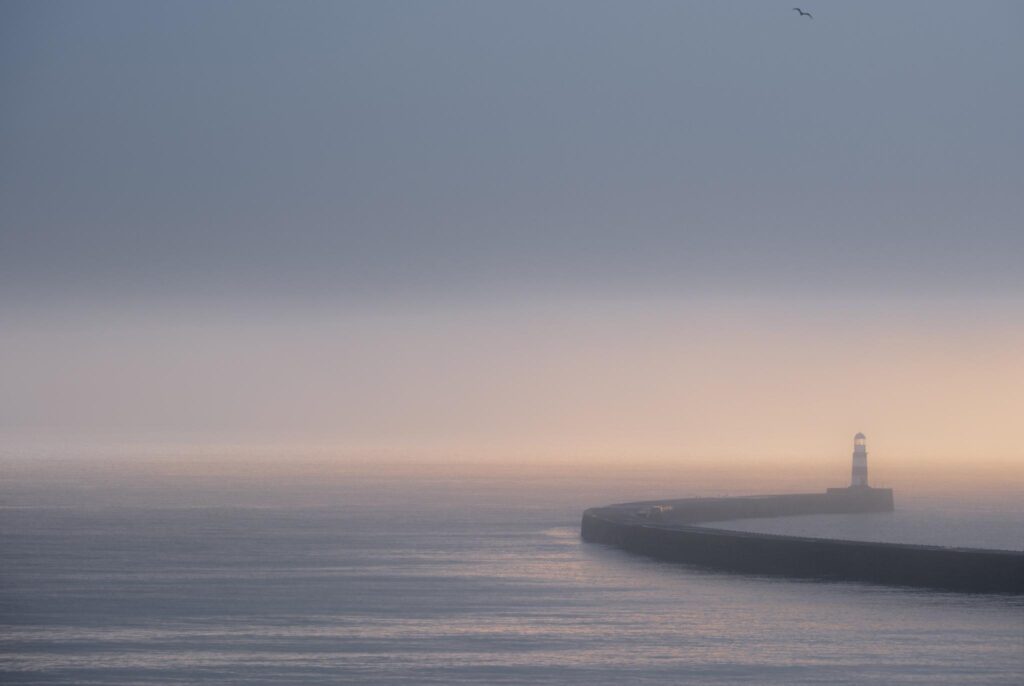Frames are the portion of “land” in which any masterpiece can live. They define the boundaries in which a scene resides, and they can be seen in natural forms thanks to beautiful oddities found on a regular basis. Frames can be found everywhere – from natural places, to serendipitous and unconscious arrangements of things fashioned by the human hand.
Note: If you are interested in taking the composition of your images beyond basics such as framing and the rule of thirds, we highly recommend Kent DuFault's guide to advanced composition.
Natural Frames
A natural frame is anything that creates boundaries that can enclose one or several scenes when human vision interacts with them. Common natural frames can be found in branches of trees and formations of rocks. Common human-made frames include windows and mirrors.
The trick behind any type of frame is that it must help you bring focus to your subject. At a composition level, using natural frames is quite useful. Finding them requires a sensible eye and some luck as well. Using such frames is considered to be an interesting practice when it comes to composition, as we we'll see later in the section on “sub-framing”.

Human-made Frames
Even though man-made frames like doorways and windows are quite obvious, they always add an extra something to a composition. They make natural frames because they accentuate the message of the image by focusing the picture’s grammar on the subject inside the photograph. They can give a sense of warmth and intrigue, and they also aid human curiosity by hiding a portion of the scene. Mirrors act well in compositions because they multiply the voice of the message. When capturing architecture in general, challenge yourself by playing around with frame-like elements and the infinite elements they can contain thanks to your own perspective.

Elements of a Frame
- Depth of Field (DoF): This is the visible distance between the closest and the furthest points measured by accurate focus nature (sharpness). A longer distance results in a deeper Depth of Field, while a shorter distance gives a shallower Depth of Field. By using this selective focusing technique, photographers can pinpoint the subject or the main point of interest.
- Foreground elements: When placed in the frame, they lead the viewer's eye toward the subject. They can be strategically used to create a pleasant balance by closing and narrowing the space inside a frame.
- Negative space: I always encourage people to not be afraid of negative spaces. I don't know when they became so negatively perceived by some purist photographers, but I personally believe that when used properly, negative space can be the perfect way to give an image the ideal message. Negative space is the presence of a large portion of the image filled with emptiness – an absence of elements. This can create a balance inside the framed composition and provide an interesting look to the photographs.
- Vignetting: This is an optical phenomenon caused naturally by the peculiar optic engineering of the lens attached to our camera. Vignetting can be used (or created in post-processing) to focus the attention of the viewer.
Sub-Framing
By using contrast and shape, you can actually make an image more interesting by creating a sub-composition inside an actual photograph. This happens thanks to a deliberate decision by the photographer to take a subject (or various) inside the image, and framing them both inside another compositional element (like lines or windows) to create an image inside another image. This is a nice way to place emphasis on something inside the composition, and it's pretty effective when an object is small and surrounded by details. You can see some examples of this technique here. Achieving this on the streets is harder than when it is used in controlled situations. Therefore, luck and patience has a lot to do when using sub-framing in an aesthetic way.

One good example of sub-framing is this image made by the great photographer (and a personal favorite of mine) Elliott Erwitt. As you can see, the ocean view is a picture itself, and the small portion of a candid scene included inside the mirror makes this picture outstanding. The thing you have to consider here is that the scene itself is already a decent picture; including another scene inside the composition makes it a richer narrative picture.
Cropping
Cropping is the act of deciding which part of the scene is worth keeping in an image, and discarding elements that don't add value to the photograph. Cropping is a style of “framing” because it is indeed the framing decision behind a scene. The great thing about cropping is its editing nature, because it can be dine in the camera or during post-processing. Many photographers are famous for not cropping in post-processing, but for me is a nurturing practice.

Cropping can even affect a picture’s intentionality and has been used for specific purposes that go far beyond aesthetics. Another form of cropping or framing is by deciding which lens to use in order to satisfy a desired image “look” or effect. Wider lenses are suited for wide crops, and telephotos for tight scenes. Cropping is considered to be one of the few editing actions permissible in our modern-day photojournalism practices (along with tonal balance, color correction and sharpening).
A crop made may produce aspect ratios that are considered special and expensive to achieve in the camera, like the panoramic format.
And to go to the next step, take a look at Advanced Composition by Kent DuFault.






